 These are the letters that some of the Montagnard backstrap weavers with whom I studied have been weaving into bag straps using one of their traditional warp float techniques. As you can see the back of the band has long floats. The finer the yarn you use the less cumbersome the floats will be.
These are the letters that some of the Montagnard backstrap weavers with whom I studied have been weaving into bag straps using one of their traditional warp float techniques. As you can see the back of the band has long floats. The finer the yarn you use the less cumbersome the floats will be.

Here I am with my dear Montagnard weaving teachers, Ju Nie, on the left, and Ngach. Ju Nie is from the Rhade group which weaves these letters. The bag I have on my shoulder was made by Ju Nie and has phrases from the Bible woven into its strap using the lettering technique in this tutorial. Examples of these straps are shown below. You can see that the bottom edge of the skirt I am wearing has figures that were woven using this same method.
Here are a couple of the traditional Rhade figures that I wove….

The white thread forms the letters and the red the background. The little spots of black showing through are the weft. If you use red weft instead of black, you will have white letters on what will appear to be a solid red background.
The white thread needs to be about one and a half times the thickness of the red. I used number 10 crochet cotton for the red and borders and number 3 for the white.
You need to wind a warp with a cross that looks like this:
 I have a plain warp faced border of black, yellow, green, black and red – traditional Rhade colors. In the design area one shed is all red and the other shed has alternating warps of white and red starting and ending with a white warp. There are fifteen white warp threads in total.
I have a plain warp faced border of black, yellow, green, black and red – traditional Rhade colors. In the design area one shed is all red and the other shed has alternating warps of white and red starting and ending with a white warp. There are fifteen white warp threads in total.
One shed will be controlled by a shed rod (which I will call shed 1) and the other by string heddles (shed 2).
Here are the two sheds….
 On the left shed 1 is open, and on the right shed 2.
On the left shed 1 is open, and on the right shed 2.
To start your band with a small section of plain weave, pass your weft through shed 1. Then open shed 2 and drop all the white warps and pass your weft (see photo below). I recommend weaving shed 1, then shed 2 without the white warps and finally shed 1 before starting to weave the letters. Weaving a longer section of plain weave than that will give you very long white floats on the back of the band.
There are two types of letter forms in this alphabet which I call REGULAR and IRREGULAR. I will give instructions for an example of a regular letter first – the letter N. I am showing it here upright and then sideways. The pattern chart shows the letter on its side as you will be weaving it.
WEAVING REGULAR LETTERS
Step 1 shows a normal weft pass through shed 1 (all red warp threads in the pattern area).
The black heavy lines on the chart represent the WHITE warp threads. In Step 2 you will see shed 2 with 15 black heavy lines which represent all the white warp threads. The red warp threads in shed 2 are always woven but are not shown on the chart. In Step 2 open shed 2, beat and pass your weft. The photo below shows a step between Steps 2 and 3 which I will call Step 2A.
Step 2A involves saving the white warps numbered 1-9 and 13-15 on the chart on a stick at the weaving line. Warps 10, 11 and 12 will be dropped.
Open shed 1, which contains all the red warps, and add the saved whites to it. Beat and pass the weft. This is shown on the chart as Step 3 and is pictured below.

Steps 4, 4A and 5 are pictured below…
Step 4…open shed 2, beat and pass the weft.
Step 4A…save white warps numbered 10, 11 and 12 on a stick at the weaving line.
Step 5…open shed 1 and add the saved white warps to it. Beat. Pass the weft.
The photo below shows Steps 6 and 7. Step 6A does not appear in this photo but will be explained.
 Step 6…open shed 2 and drop the white warps numbered 1-6 and 13-15. Beat and pass the weft in this shed as shown above left.
Step 6…open shed 2 and drop the white warps numbered 1-6 and 13-15. Beat and pass the weft in this shed as shown above left.
Step 6A…(not pictured) save the white warps numbered 7, 8 and 9 on a stick at the weaving line.
Step 7…open shed 1 and add the saved white warps to it as shown above right. Beat and pass the weft.
Steps 8, 8A and 9 are shown below…
Step 8…open shed 2 and drop the white warps numbered 1-3 and 10-15. Beat and pass the weft in this shed as shown above left.
Step 8A…save the white wefts numbered 4, 5 and 6 on a stick at the weaving line.
Step 9…open shed 1 and add the white warps to it. Beat and pass the weft.
From here on you should be able to continue on your own.
WEAVING IRREGULAR LETTERS
The letter A in this kind of lettering is what I call an irregular letter. Generally letters that have curves have an irregular step in the process.

Step 1…open shed 1, beat and pass the weft.
Step 2…open shed 2 and drop the white warps numbered 13, 14 and 15. Beat and pass the weft.
Step 2A…save the warps numbered 1-7 and 9-12 on a stick at the weaving line (drop number 8). Here comes the irregular move…pick up the white warp numbered 13 (indicated by the green arrow) and also save it on the stick.
Step 3…open shed 1 and add all the saved white warps to it. Beat and pass the weft.
####################################################
Apart from the word “Montagnard” shown above, I have not woven anything with this lettering technique. I would like to try it in finer yarn…say a number 20 for the base warp and weft and perhaps weave a bookmark with a word on it.
Here are all the letters that I have been able to chart from the woven bands that my weaving teacher, Ju Nie, showed me…
And here is a letter P that I saw on my last visit with the weavers which I haven’t charted yet….
My friend, Sharon, charted all the letters for us and has even included numbers and a heart!
Here is one of my teachers weaving two bag straps on her backstrap loom. The looms are very large and designed for weaving very wide panels which are sewn together to make their traditional skirts and blankets.

















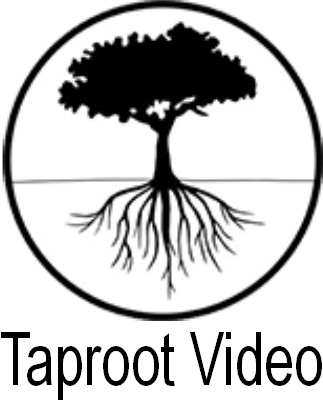
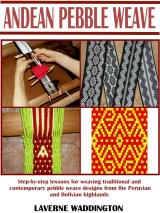
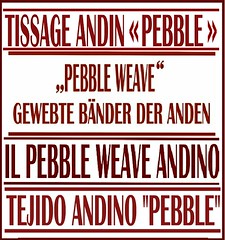
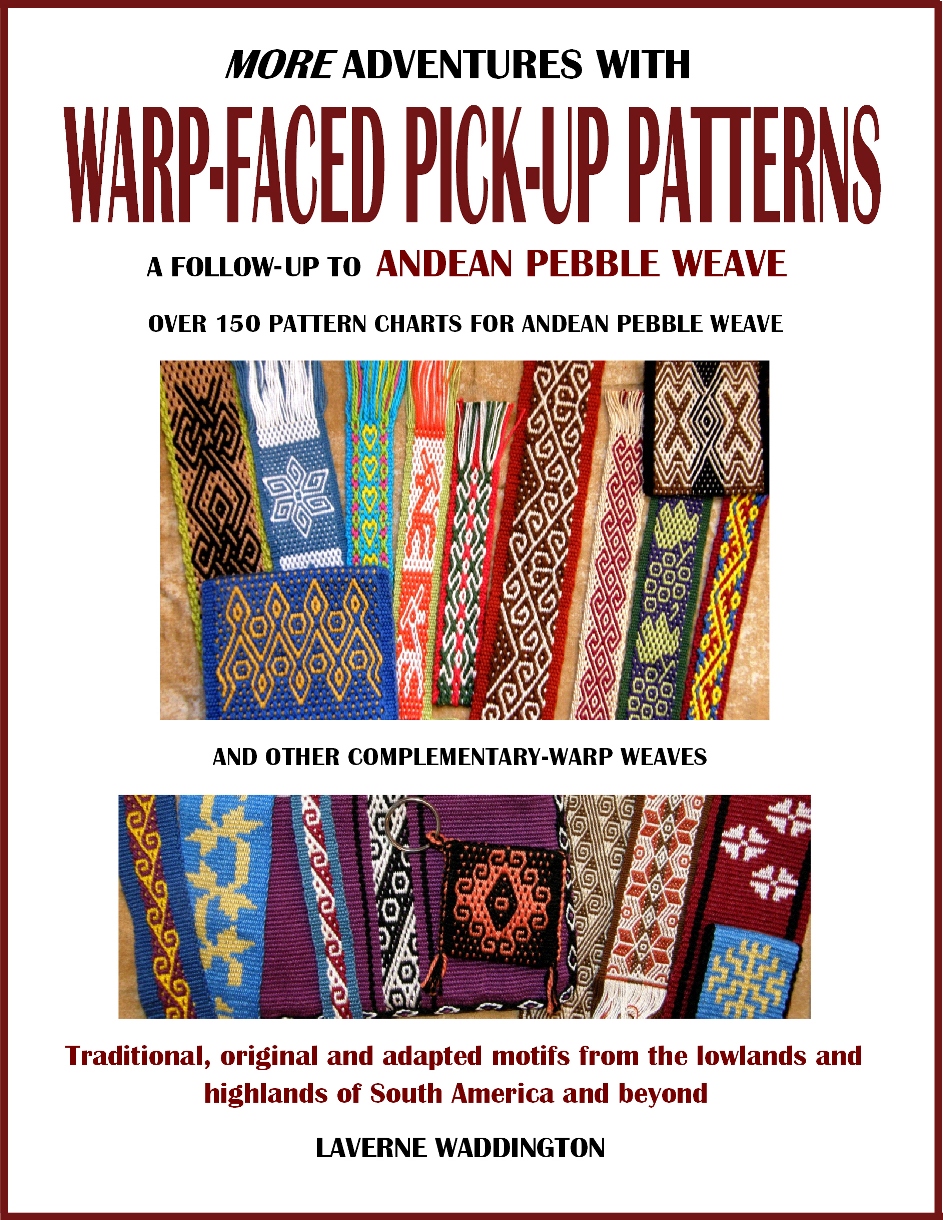
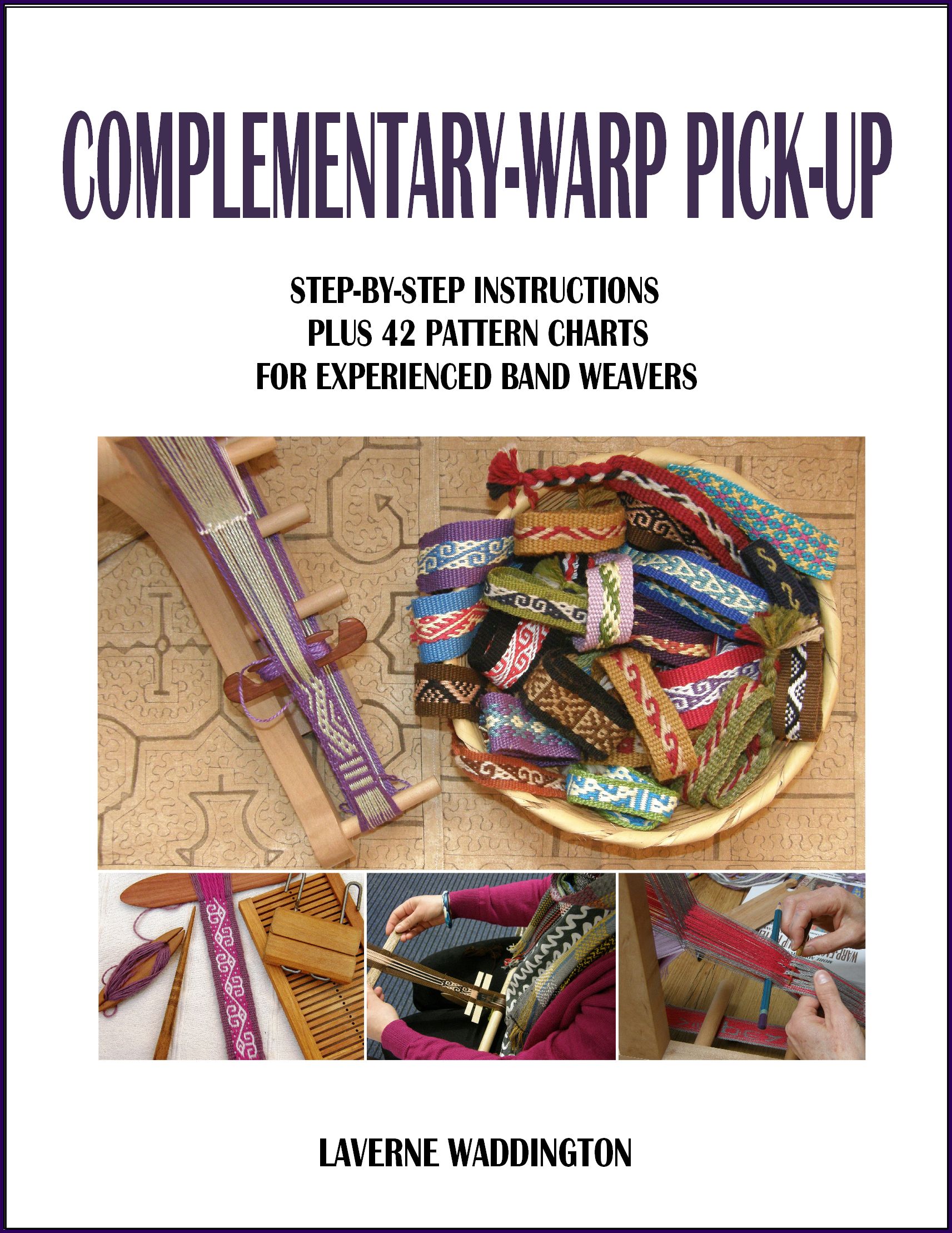
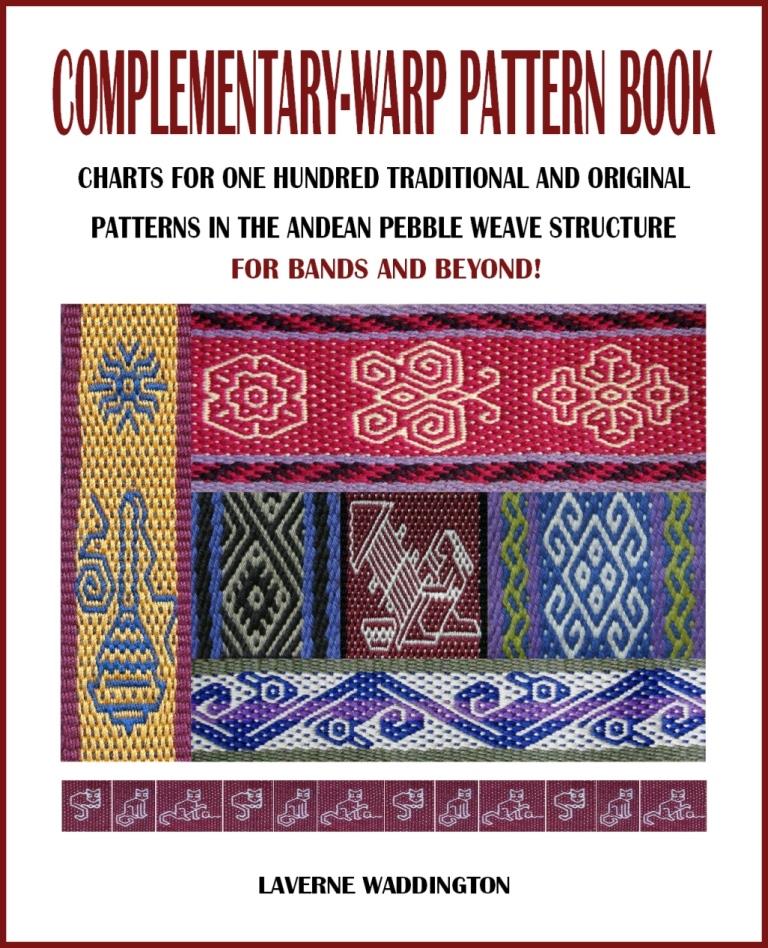
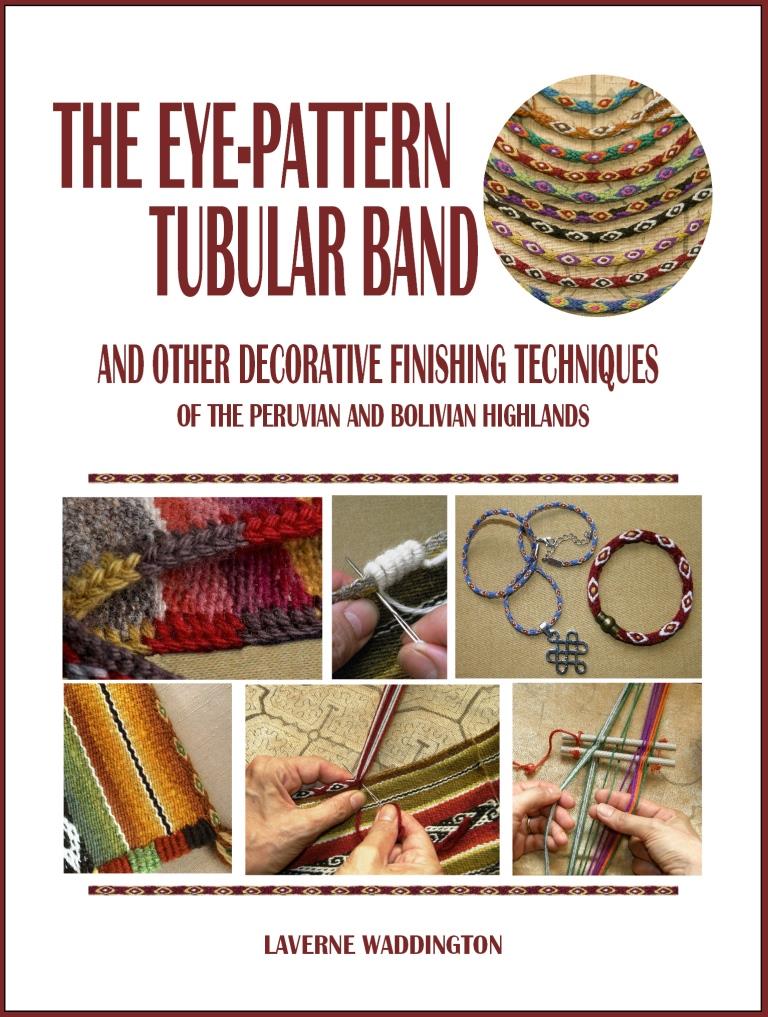
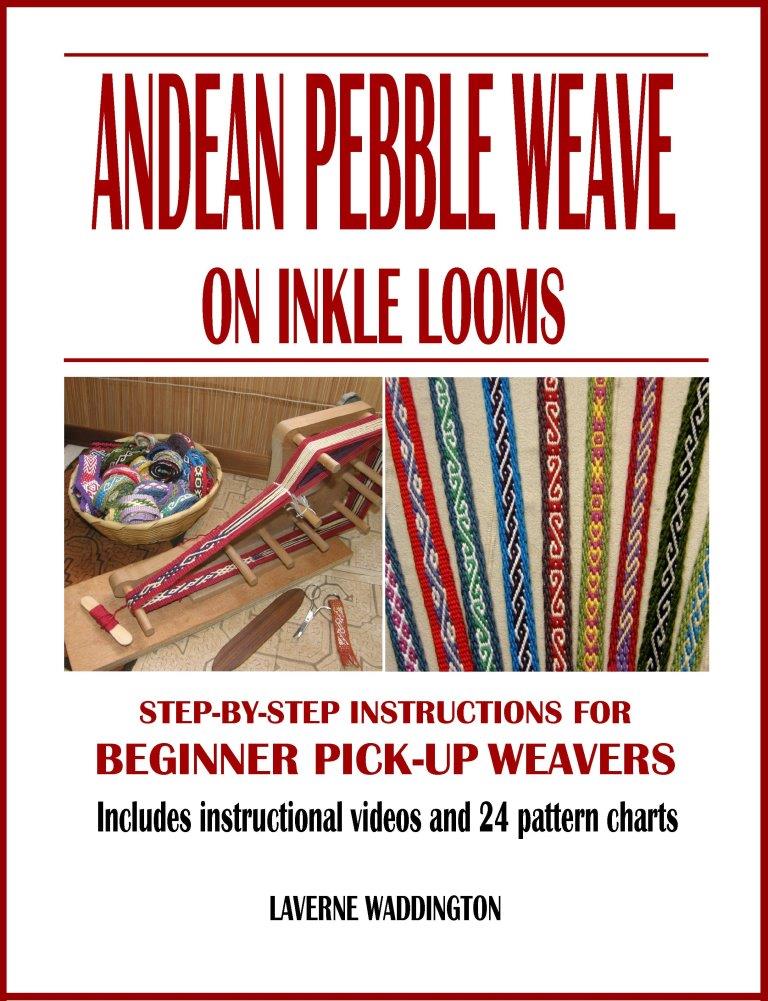


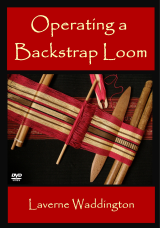
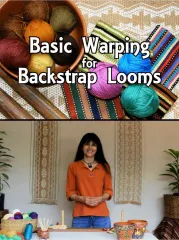

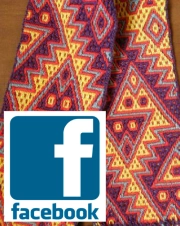





Do you have any more pictures of the original bag straps? I would like to try to guess at the pick up draft of the slanting letters like V and W.
Thank you for such an awesome blog. I really wish that I could have been on your colors of the oasis trip. I loved that exhibit, and I couldn’t figure our the bands on the edges on the robes. I think they are twined on the finished robe as a surface woven embroidery. (but that is just my $0.02)
By: Lily on January 3, 2011
at 10:46 pm
Lily, I have posted pictures of the letters on the woven straps on the tutorial page. One of my friends wanted to guess the letters too and made a chart.
There was a talk on those bands on the garments in the Textile Museum’s exhibit but I missed it. Now we will never know!
By: lavernewaddington on January 7, 2011
at 2:40 am
I think details about it are in the show book. Lisa and I will be going back later this spring, I’ll check for you.
By: Lily on January 20, 2011
at 5:49 pm
Hi, Laverne
Could you show how to tye a warp for letting in weaving?
What is the best way to tye the warps to get the double shed, one with all red and the other with alternating red and white?
By: Cookie on June 15, 2011
at 3:02 pm
Cookie, I will email you about this. Give me a day or two.
By: lavernewaddington on June 15, 2011
at 3:04 pm
Hi My Dear Teacher !!
I made some really good pieces last two days and, I may send them to you tonight. I hope, you like them.
The letters would be very good for pieces to sell. For example, first letters of names for Valentines Day on a bracelet…
The warping is a bit crowded or it is crowded for me.
There are 3 red’s between each white couples. The upper side, is one white, one red. Upper side, our part, two reds. And between that two reds, the one red comes to down to between white ones…
😦 A little bit crowded…
Best !
Devrim
By: devrimm on January 24, 2012
at 1:07 pm
I love your site!!! Everything is beautiful and I almost understand it! I’m just getting into inkle weaving, so I’m a bit confused sometimes. How do I warp my inkle loom for this setup? And I can work out the P and V that’re missing from your chart, but what about the rest? And do you have the numbers that aren’t shown?
Thank you for all your lovely work!
Amanda
By: Amanda Cluxton on June 17, 2014
at 7:19 am
Amanda, thak you for your comment. I just added the charted letters that my friend Sharon made. I had included them in a blog post but hadn’t put them here on this tutoral page where they belong. Sharon worked out possibilities for all the missing letters and did some numbers too (and a heart!)
By: lavernewaddington on June 17, 2014
at 10:01 am
Thank you sooooooo much! Would you be able to tell me how to warp my inkle loom for this?
By: Amanda Cluxton on June 18, 2014
at 4:03 am
Amanda, one shed has alternating white and red warps and the other is all red. So, you could start with winding 1. a white end “open”, then 2. a red ”heddled”, then 3. a red “open” then 4.a red “heddled”. Start again at step 1 and continue until you have 15 white warp ends. Finish with a white in the open shed. This is the pattern area. It’s up to you how you want to arrange the colors for striped borders on each side of the red-and-white pattern area. A word of friendly advice….I don’t know how much pick-up patterning you have done so far on your inkle loom but I wouldn’t consider this a good technique for a first attempt. I would hate for you to get frustrated with it. My feeling is that if you are not able to look at my pictures and be able to tell on your own how to warp your loom for this, you may not have the skill level yet that is required to weave it. Take a look at my tutorial entitled ”simple warp floats”. That is a good place to start with pick-up weaving and will teach you skills step-by-step that you can go on to use for this lettering technique later.
By: lavernewaddington on June 18, 2014
at 5:13 am
Thanks for the help. I just wanted to double check that it was a 1:3 ratio, as well as which should be heddles and not. I’ve been blowing up the pics at the top and writing out a pattern like the “Inkle Pattern Directory” shows. And I’ve been playing each day with the different pick ups in that book, so I’m willing to try!
Thanks again!
Amanda
By: Amanda Cluxton on June 18, 2014
at 7:33 am
Quick question about your bookmark idea: if you use size 20 for the background, what size are the pattern threads? Also, are the perle cotton sizes (ie DMC perle cotton size 10) equivalent to crochet cotton sizes?
Thanks again! I still enjoy your site!
Amanda
By: Amanda Cluxton on November 8, 2014
at 7:51 am
Hi Amanda,
The size numbers for the DMC cotton that I have used don’t seem to relate to crochet cotton sizes. I have not used #20 (I think I was referringy to some Cebelia thread that I have when I said size 20…that was a long time ago!) for this technique and so I don’t know what size pattern warp I would use. It is all about trial and error for me. I sample and see if I am pleased with the result and then try again with another weight if not. Sorry I can’t give you specific numbers. The sample in the tutorial had pattern threads that were 1.5x the ground threads. I don’t know if this ratio remains suitable when you go down to much finer thread.
By: lavernewaddington on November 10, 2014
at 4:04 am
This is very interesting!
But I struggle to understand a little since English is not my main language. Is there any video tutorial on this?
By: Sabina on March 29, 2020
at 12:37 pm
No, there isn’t. Sorry, Sabina.
By: lavernewaddington on March 29, 2020
at 12:47 pm
Hello again! I finally got to making a banner for my Mom’s business. It’s a bit small but it works for now. I’d like to send you a pic to show it to you if that’s all right with you.
Also, how would I make a banner that’s 2 or 3 lines of words, instead of just 1? I’ve got a longer sentence I’d like to do this way, but it’d be a very long banner if all the words are on 1 line. Would I just put in background warp threads between the lines of text? If so, do I keep the same 1:3 pattern going, but with all background threads?
And another question, if I do this on my rigid heddle loom, I just need to keep the same patterns of what is heedled/open, correct?
Thanks soooo much for everything. Good luck with your work. ;p
Amanda
By: Amanda Cluxton on November 17, 2014
at 1:14 am
I got an interesting request earlier today: to make a banner with a “candy cane-like” border. Is this possible? I haven’t been able to find a variegated red/white size 10 thread for this. What do you think I should try?
Thanks so much again. I still love your work!
Amanda
By: Amanda Cluxton on January 26, 2015
at 5:49 am
Candy cane…red and white diagonal stripes, right? There are pick-up structures that will allow you to create two-color diagonal stripes if you are willing to go to the trouble of learning them for this particular request.
By: lavernewaddington on January 26, 2015
at 2:23 pm
I’m always willing to learn. Would using tablets that always turn the same way work as well? I’m going to be using my inkle loom and experimenting for a bit. How would I find that particular tutorial?
Thanks,
Amanda
By: Amanda Cluxton on January 26, 2015
at 5:20 pm
You could always do red and white horizontal lines. You already know how to warp for those….one shed all red and the other all white. Do you think that would be acceptable?
By: lavernewaddington on January 26, 2015
at 6:11 pm
I’m going to do a sampler of all these I think, then show her what she can pick from. Thanks so much for the help.
By: Amanda Cluxton on January 27, 2015
at 1:01 am
As tu des videos pour comment faire les lettres stp
By: Carole chalifour on January 10, 2019
at 12:38 am
I am sorry. I haven’t made videos for this technique.
By: lavernewaddington on January 10, 2019
at 1:07 am
Thank you! Thank you! 🙂
By: dadosutter on April 3, 2019
at 2:52 pm